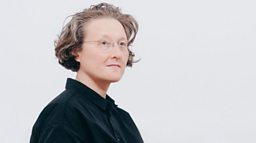Tectonics 2025 Artist Profile

Beatrice Dillon
Beatrice Dillon is a London-based artist and music producer, known for her innovative work in sound, performance, and installation. She has performed and presented her work at major arts institutions worldwide, and her last album ‘Workaround’ (PAN, 2020) was named Album of the Year by The Wire magazine. Recent multi-channel sound works include: ‘Basho’ (Ina GRM, Paris 2024) and ‘Impossible Ideal Angle’ (Haus der Kunst, Munich 2022). She composed the soundtrack for Turner-Prize artist Helen Marten’s film ‘Writing A Play (dark blue orchard)’, at Greene Naftali, NY and was the album-producer for Norwegian saxophonist Bendik Giske, both in 2023. In 2022, Dillon was commissioned by artist Mark Fell to compose for leading contemporary-classical group Explore Ensemble at No Bounds, Sheffield. Her ’Seven Reorganisations’ (2022) explored acoustic reinterpretations of digital processes. Dillon’s first orchestral work, ‘Sift: Piano, Vibraphone, Other’ (2024), commissioned by Nonclassical in partnership with 大象传媒 Radio 3 and 大象传媒 Scottish Symphony Orchestra, debuted with the London Symphony Orchestra in October 2024. ‘Seven Reorganisations’ is the inaugural release on Dillon’s record label, HI, late 2024.
Photo credit: Emile Holba
Sift: Piano, Vibraphone, Other (2024)
After the success of Seven Reorganisations (2022), Beatrice Dillon’s first foray into the palette of acoustic instruments, the composer and sound artist follows up with Sift: Piano, Vibraphone, Other (2024), her first orchestral work. Scored for 40 players, Sift is the most extensive development yet of Dillon’s conception of sound and music as existing in a three-dimensional environment. Describing Sift as “an unfolding sequence of rhythmical patterns”, the composer accentuates the changing relationships of sounds by creating an orchestral space that sits between a grand piano and a vibraphone that are placed on either side of the stage. In this in-between space, one cloaked with resonances rising from the two main instruments, the ‘other’ takes place, its sounds characterised by “threads or shards of sounds”. In this way, Dillon, trained originally as a visual artist, seeks to provide a space in which the invisible acoustic sculpture of music takes place.
